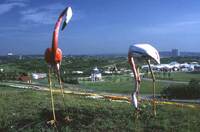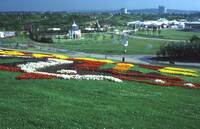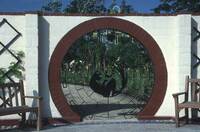- England
- Scotland
- France
- Holland
- Germany
- Italy
- Spain
- Portugal
- USA
- China
- Japan
- India
- Iran
- Advice
- Gardens
- England
- Scotland
- France
- Holland
- Germany
- Italy
- Spain
- Portugal
- USA
- China
- Japan
- India
- Iran
- Advice
- Garden Tours
Book: Landscape Planning and Environmental Impact Design: from EIA to EID
Chapter: Chapter 4 Public open space POS
Nations love festivals, especially when they are in parks, but the money will be squandered if an after-use is not planned before the festival-use. The garden shows which have been held in Germany since 1939 established a tradition which enables the energy of commercial operators to assist in the development of parks [Fig 4.19]. They are sited on existing or proposed parkland and the public are charged an entrance fee during the show. After it closes, the land becomes a public park. Britain held its first garden festival in Liverpool in 1984. It was a means of reclaiming a large area of derelict land. After the festival closed, half the site was designated a public park and riverside promenade. The other half was allocated to industrial development and its theme gardens were destroyed, thus wasting a hefty investment in park design. The promenade forms part of an enlightened open space plan for the city, but the main body of the new park contributed to a level of open space provision which was already overï¾generous in that part of Liverpool. Britains other garden festivals were also badly planned. A park was kept from the Stoke on Trent Garden Festival. The Glasgow Garden Festival site was completely re-developed. Any future garden festivals should be part of a citywide strategy. This could be for open space development or it could be for urbanisation. Urbanisation, as discussed in the final chapter of this book, is expensive. So is the start of a new family - but there are good reasons for celebrating new settlements and weddings with a ruinously expensive festival. Town developments should have launch parties. If housing is the appropriate after-use, the festival project can put in permanent buildings, roads and trees, as housing infrastructure. This was done for the Dutch Floriade on the edge of Zootermeer New Town. Ideally, the opportunity should be taken to effect innovations in urbanisation techniques. Other chapters of this book suggest the need for imaginative use of vegetated roofs, porous pavements, habitat creation, after-use of mineral workings and urban forests. Planning an after-use is the key to the long-term success of festival parks.


